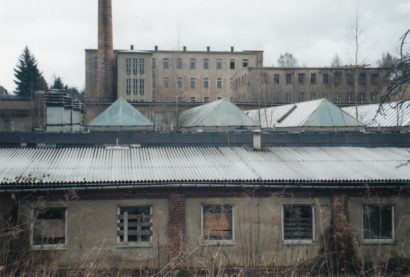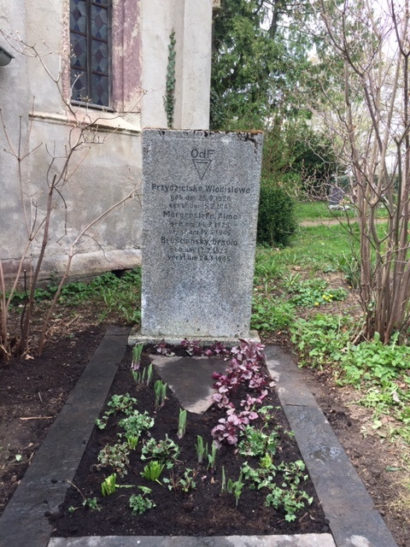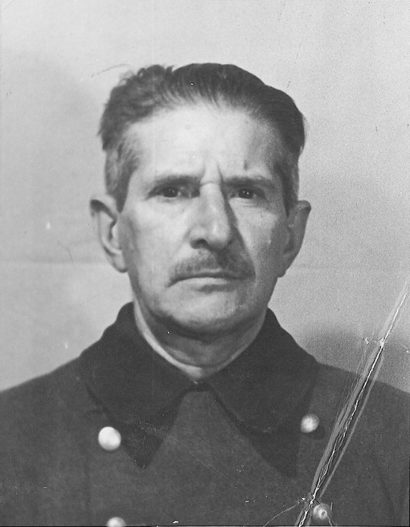



















































































Wolkenburg Subcamp
End of August 1944 – April 13, 1945
Starting September 1, 1944, under the authority of the Flossenbürg concentration camp
![]()
Former factory building in Wolkenburg (Flossenbürg Concentration Camp Memorial / Photo: Annett Groh)
![]()
Tombstone with the names of former prisoners at the cemetery in Wolkenburg (Flossenbürg Concentration Camp Memorial / Photo Annett Groh)
![]()
Detail leader Wilhem Brusch, ca. 1946 (National Archives, Washington D.C.). Before working at Wolkenburg, Brusch already worked several years as a guard in several concentration camps.
-
Prisoners
On August 22, 147 women arrived in Wolkenburg from the Ravensbrück concentration camp, among them 112 Germans, nine Poles and seven Dutchwomen, along with women from four other countries.
-
In October, 150 women arrived from Auschwitz (137 from Poland, 37 from Russia, six from Yugoslavia, three Italians) and 100 from Bergen-Belsen (97 Polish, three Russians). A good third of the women were Sinti and Roma. In mid-April, 372 prisoners were still registered.
-
Forced labor and quarters
A manufacturing section of the Berlin electronics company Opta Radio was located in a building of the disused “Leipziger Baumweberei Wolkenburg”. The women were quartered on the factory premises in the upper floor of a building.
-
Guards
Detail leader Wilhelm Brusch, five SS guards and 21 female overseers (April 1945). Many women reported that severe punishments were meted out for the smallest offenses.
-
Death toll
At least seven instances of death are documented. Pregnant and severely ill women were transferred to Ravensbrück.
-
Disbanding of the camp / end of the war
On April 13, 1945, the women were sent in the direction of Flossenbürg partly by foot, partly in train wagons. Due to the overcrowding of the camp, they were sent further in the direction of Dachau.
-
At least five women were executed along the way for allegedly stealing food. Only 116 of the original 372 women reached the Dachau concentration camp.
-
Commemoration
Two prisoners were buried in the Wolkenburg Cemetery. Since 2000, a commemoration stone memorializes the subcamp.


